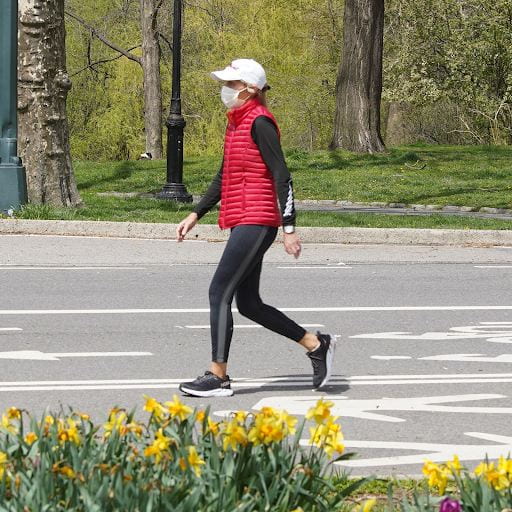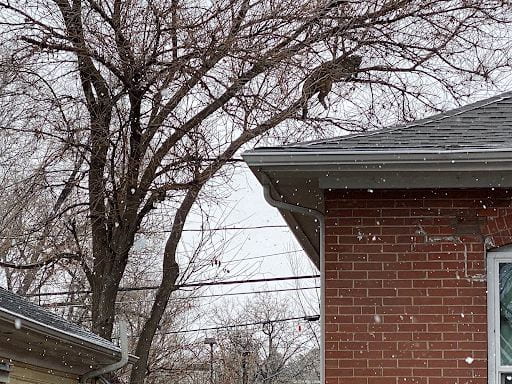Respecting Nature: How COVID-19 Could Re-Orient Our View of the World Around Us
While the current COVID-19 pandemic is certainly a tragedy first and foremost, it has given many people privileged enough to remain healthy the opportunity to sit and reflect on their place in the world, and it has given wildlife the opportunity to re-emerge and make clear how much they are a part of ours. Some bold thinkers believe the destabilization of our way of life could provide an opening to enact lasting change in our society for the better of the environment, mainly a greater connection to the world around us and respect for how dependent we are on nature.
Perhaps the most jarring way COVID-19 has changed lives globally is by causing shutdowns and stay-at-home orders confining people to their homes almost 24/7. People around the world are finding themselves stuck at home, forced into a completely unfamiliar lifestyle. However, some are finding a way to make this unfortunate situation have an upside. With all this extra time at home, a growing number of people have begun to do things like meditation, art, and volunteering.

(Picture: Getty)
On social media there has been an outpouring of love and support from all around the globe, and people are brought together with things like online pilates, art classes, and guided meditations. Like with all disasters, the best of humanity is revealing itself while we go through some of our worst times. But what if the practices we create in quarantine could live on beyond this pandemic? It is common knowledge that exercise, nature, and meditative hobbies such as art or mindfulness improve our quality of life, but until now many people have been too busy playing along with the constant grind of our culture to enjoy the finer things – something that can be seen when we look at the levels of depression and anxiety in this country. According to the Anxiety and Depression Association of America, 40 million adults suffer from anxiety disorders every year. These numbers have been rising for decades, according to Dr. Laurel Williams, chief of psychiatry at Texas Children’s Hospital, and it may have to do with the way we live. “There’s a lack of community. There’s the amount of time that we spend in front of screens and not in front of other people. If you don’t have a community to reach out to, then your hopelessness doesn’t have any place to go. [T]he being rushed and lack of connections that we have in the structure of how we live lives now [raise rates of depression],” as Eric Klinenberg, professor of sociology and director of the Institute for Public Knowledge at New York University said in the Politico article detailing how COVID-19 could change society. “The coronavirus pandemic is going to cause immense pain and suffering. But it will force us to reconsider who we are and what we value, and, in the long run, it could help us rediscover the better version of ourselves,” he continues. In the face of the climate crisis, this pandemic could form the global sense of community and values necessary to make necessary changes to our lives.
While coronavirus has certainly raised anxiety and depression around the world, staying at home opens the door to exploring what life could look like when focused on the community. After all, staying indoors is itself a community-based act of caring, and many are given the chance to finally spend quality time with their loved ones. Community has become a cornerstone of life as people begin to realize how important connection is – reaching out to friends, neighbors, and family members. Hopefully, after the pandemic is over some of these community-based habits will remain, and we may see an improvement in mental health due to the sense of community instilled by this threat we must face together – not as individualists.

(Picture: Yahoo News)
Another way mental health may be improved after the pandemic is through nature. In a 2015 study, researchers compared the brain activity of healthy people after they walked for 90 minutes in either a natural setting or an urban one. They found that those who did a nature walk had lower activity in the prefrontal cortex, a brain region that is active during rumination — defined as repetitive thoughts that focus on negative emotions. It also appears that interacting with natural spaces offers other therapeutic benefits. For instance, calming nature sounds, and even outdoor silence, can lower blood pressure and levels of the stress hormone cortisol, which calms the body’s fight-or-flight response (Strauss, 2018). Due to coronavirus, Americans have been rediscovering nature. Many are visiting local parks, taking walks in the outdoors, spending time in their backyards and patios, or even just taking online vacations with google earth. With transportation and the bustle of everyday life ground to a halt, there is no choice but to stop and listen to the birds sing. In fact, many people have been astounded by how loud birds actually are. In Wuhan, China, residents have claimed that they thought there were no birds in the city before, but now know there are many that were previously drowned out by the noise of human activity (Koren, 2020). As they explore the great outdoors, people are noticing another phenomenon that resulted from the coronavirus – all sorts of wildlife seem to be enjoying the break.
Mountain goats roam the streets of Llandudno, Wales, last month. The goats, who live on the rocky Great Orme, are occasional visitors to the seaside town, but a councilor told the BBC the herd is now drawn by the lack of people and tourists. (Christopher Furlong/AFP/Getty Images)

Mountain goats roam the streets of Llandudno, Wales, last month. The goats, who live on the rocky Great Orme, are occasional visitors to the seaside town, but a councilor told the BBC the herd is now drawn by the lack of people and tourists. (Christopher Furlong/AFP/Getty Images)
Around the world, wildlife has been sighted coming out of the woodwork in the wake of shutdowns. Nara, Japan’s alleys are peppered with wandering sitka deer. Oakland, California has a surprisingly boisterous population of urban turkeys. San Felipe, Panama’s beaches are being enjoyed by vacationing raccoons (Singh, 2020). Barcelona’s streets are filled with romping wild boars. Whales can finally freely swim in the Mediterranean sea without having to avoid deadly shipping lanes. Mountain goats have all but taken over a town in Wales. As one resident said, “They keep coming back, multiple times per day, 10 to 15 of them. They’re taking the town back. It’s now theirs. Nothing is stopping them” (McCoy, 2020). In Boulder, Colorado, there has been a notable increase in mountain lion activity, as the elusive and before rarely seen predators roam the streets and sleep above houses. Groups of up to three mountain lions were seen wandering the streets of north Boulder this month as the lack of people led them to explore previously inaccessible territory (Iyer, 2020).

A mountain lion sleeps in a tree above Boulder, Colo. (Photo by Bruce Borowsky)
On Brazil’s Northeast coast, a few weeks ago the beaches were filled with baby turtles, a yearly occurrence. This year though had a major difference. Whereas normally people, dogs, the lights of the city, and other factors lead to a great majority of the baby turtles becoming confused and dying shortly after hatching (by waddling toward the city instead of the ocean), this year everything happened naturally. Environmentalist Herbert Andrade was moved almost to tears when he watched the annual hatching this spring. Hundreds of turtles dug their way out of the sand and into the ocean, without any of the obstacles humanity created (Iyer, 2020). “The whole world is under risk,” said Andrade, environmental manager for the city of Paulista. “But this was a moment of happiness. It was a feeling that nature was transforming itself,” he said, remarking that “it was a surreal sensation, you see nature living out its role in this way…. Things fit together. We saw nature birthed without human interaction.”
Currently, we are destroying ecosystems faster and faster the more they decline and, by doing that, pressuring the species that depend on them. As habitats shrink and humans invade wild places, wildlife has no choice but to adapt. Raccoons and coyotes dominate San Francisco just as jaguars and wild boars do in Dubai. This isn’t a fairytale story of coexistence though. Wildlife doesn’t invade our cities because they want to be there; there’s simply nowhere else for them to go. Close contact with humans and animals isn’t a good thing either – it is what led to the development of many viral outbreaks, including the coronavirus. According to the UN’s Chief of Environment, Inger Anderson, humanity is placing too many pressures on the natural world with damaging consequences, and she warned that failing to take care of the planet meant not taking care of ourselves: “Our long-term response must tackle habitat and biodiversity loss.” On the cause and possibility of something like coronavirus recurring, she stated, “Never before have so many opportunities existed for pathogens to pass from wild and domestic animals to people. Our continued erosion of wild spaces has brought us uncomfortably close to animals and plants that harbour diseases that can jump to humans”(Anderson, 2020). A similar sentiment was echoed by Jane Goodall: “Because as we destroy, let’s say the forest, the different species of animals in the forest are forced into proximity and therefore diseases are being passed from one animal to another, and that second animal is then most likely to infect humans as it is forced into closer contact with humans.” Goodall went on to say people should consider little choices they make, such as their diets, the origins of their food, and whether it causes cruelty to animals (Goodall, 2020).
Maybe this pandemic will be the wakeup call that something has to give. Sonia Shah, author of Pandemic: Tracking Contagions From Cholera to Ebola and Beyond, believes that COVID-19 may cause a change for the better of our world – whether we like it or not. She stated that “[i]n the best-case scenario, the trauma of the pandemic will force society to accept restraints on mass consumer culture as a reasonable price to pay to defend ourselves against future contagions and climate disasters alike.” Shah goes on to explain that encroaching on animal habitats and our addiction to globalization caused this pandemic in the first place. She theorizes that “we could decide to shrink our industrial footprint and conserve wildlife habitat, so that animal microbes stay in animals’ bodies, instead.” By lightening the human footprint on the earth, wildlife could live more freely and with less threats, as has begun to happen during these shutdowns across the world, and we can continue to benefit from functioning ecosystems that we depend on. Conservationists believe this may be a chance to push for more environmental protections and give animals a world more like the one they have now. Many people are wondering when life will get back to normal, but maybe we should instead be thinking about what in our old way of living needs to change, and nature should be part of the solution.
Around the world, leaders are speaking out on the environmental impacts of coronavirus. In an email interview published in The Tablet and Commonwealth magazines, the pope said the outbreak offered an opportunity to slow down the rate of production and consumption and to learn to understand and contemplate the natural world. “We did not respond to the partial catastrophes. Who now speaks of the fires in Australia, or remembers that 18 months ago a boat could cross the North Pole because the glaciers had all melted? Who speaks now of the floods?” the pope said. Inger Anderson had a more action-based view of how coronavirus should lead us to proceed: “There are too many pressures at the same time on our natural systems and something has to give. We are intimately interconnected with nature, whether we like it or not. If we don’t take care of nature, we can’t take care of ourselves. And as we hurtle towards a population of 10 billion people on this planet, we need to go into this future armed with nature as our strongest ally”(Anderson, 2020). Jane Goodall said that she is now hopeful, as are many other environmentalists watching nature bounce back so quickly from drastic actions. Goodall stated the reason for her hope: “One day we will be better people, more responsible in our attitudes toward nature.” In a separate interview, she added, “What we can do in our individual lives does depend a little bit on who we are, but we all can make a difference, everybody can”(Goodall, 2020).
Sources
Carrington, Damian. “Coronavirus: ‘Nature Is Sending Us a Message’, Says UN Environment Chief.” The Guardian, Guardian News and Media, 25 Mar. 2020,
“Coronavirus Will Change the World Permanently. Here’s How.” POLITICO, 19 Mar. 2020,
Deese, Kaelan. “Jane Goodall Blames ‘Disregard for Nature’ for Coronavirus Pandemic.” TheHill, The Hill, 11 Apr. 2020,
“Facts & Statistics.” Anxiety and Depression Association of America, ADAA,
adaa.org/about-adaa/press-room/facts-statistics.
Fox, Maggie. “Major Depression on the Rise among Everyone, New Data Shows.” NBCNews.com, NBCUniversal News Group, 11 May 2018,
www.nbcnews.com/health/health-news/major-depression-rise-among-everyone-new-data-shows-n873146.
Gallagher, Delia. “Pope Says Coronavirus Pandemic Could Be Nature’s Response to Climate Crisis.” CNN, Cable News Network, 9 Apr. 2020,
www.cnn.com/2020/04/08/europe/pope-francis-coronavirus-nature-response-intl/index.html.
Harvard Health Publishing. “Sour Mood Getting You down? Get Back to Nature.” Harvard Health, July 2018,
www.health.harvard.edu/mind-and-mood/sour-mood-getting-you-down-get-back-to-nature.
Iyer, Varun. “After Mountain Lions Wandered through Boulder, Officials Unsure How Sheltering Will Impact Wildlife.” The Know, The Know, 25 Mar. 2020,
theknow.denverpost.com/2020/03/25/boulder-coronavirus-sheltering-impact-wildlife/236089/.
Koren, Marina. “The Pandemic Is Turning the Natural World Upside Down.” The Atlantic, Atlantic Media Company, 2 Apr. 2020,
www.theatlantic.com/science/archive/2020/04/coronavirus-pandemic-earth-pollution-noise/609316/.
McCoy, Terrence. “As Humans Stay Indoors, Wild Animals Take Back What Was Once Theirs.” The Washington Post, WP Company, 15 Apr. 2020,
Quinney, Marie. “COVID-19 and Nature Are Linked. So Should Be the Recovery.” World Economic Forum, 14 Apr. 2020,
www.weforum.org/agenda/2020/04/covid-19-nature-deforestation-recovery/.
Singh, Maanvi. “Emboldened Wild Animals Venture into Locked-down Cities Worldwide.” The Guardian, Guardian News and Media, 22 Mar. 2020,
www.theguardian.com/world/2020/mar/22/animals-cities-coronavirus-lockdowns-deer-raccoons#maincontent.


